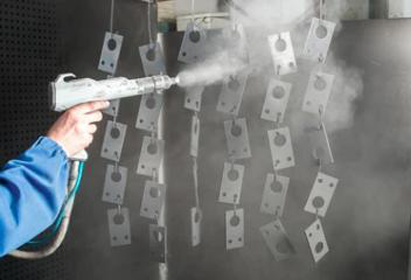
Producing the required exterior polish for a processed workpiece is highly significant.
- Surface finish callouts in engineering drawings provide the exact specifications for the finish of a part
- Surface notes typically employ Ra—arithmetic mean deviation—when specifying roughness
- Familiarity with surface callouts is vital for achieving performance targets
- A well-defined surface finish can impact factors such as lubrication, friction, and durability
- Precise decoding of callouts secures the specified finishing outcome
Defining Precision in CNC Machining

Programmed machining operates as a leading production process employing digital instructions the machinery forms elaborate parts with exactness.
- The technology facilitates production of complex parts across many materials
- Adaptable CNC processes fit the demands of aerospace, automotive, and medical markets
- CNC machining delivers exceptional repeatability ensuring identical parts across production runs
From concept models to high-volume manufacturing CNC machining anchors industrial production
Interpreting CNC Specifications
Reading machine specs may appear overwhelming initially
In contrast, measured learning and order help you traverse technical specifications
Launch by determining central specs: spindle rpm, feed velocity, accuracy, envelope, controller
Each of these specifications contributes to the machine's overall performance.
Consider that higher spindle velocity suits pliant materials while elevated feed boosts capacity.
Comprehending those interactions assists in picking the proper CNC for tasks
Make sure to read supplier manuals attentively.
Producer documentation frequently delivers important notes and clarifies terminology
A Guide to CNC Machines: What You Need to Know
Programmed machining equipment comprises computer-managed tools for exact automated fabrication of diverse materials Operation relies on parsing G-code directives to manage cutting devices and toolpaths.
- Representative CNC types cover milling tools, turning machines, routers, plasma cutters
- Processes are adaptable to metals, polymers, timber, and composite materials
- Also CNC equipment offers quick turn prototyping and low-volume runs for innovators and labs
Understanding CNC Machinery
They embody an integration of hardware accuracy and advanced software regulation Versatile machinery employs programmed code to autonomously produce simple parts and complex assemblies The core idea is converting digital blueprints into tangible parts.
- Numerical control manufacturing
- Code-driven production workflow
It performs sequenced precise axis operations dictated by program Machine operators handle parameter selection, process monitoring, and quality confirmation.
Surface Finish's Importance in CNC Machining
Achieving the desired surface finish in CNC machining is crucial It determines product function and aesthetic quality Base material, cutting conditions, and post-machining refinements govern texture.
Smoother surfaces elevate durability while coarser textures may impair utility Programmed machining features assorted toolpaths and cutters to deliver specified finishes.
- Example: altering tool nose radius and flute profile |high-speed steels|tool speed tuning to deliver finish
- Alternatively post-processing methods like polishing grinding sanding can be employed to improve the surface finish
Grasping how machining variables affect texture is critical to obtain optimal outcomes.
CNC Machine Basics: From Operation to Applications
This precise method uses computer-guided machinery to sculpt components from diverse substrates They adhere to programmed code to reproduce complex geometries with repeatable accuracy Awareness of G-code, tooling, and machine operation aids successful production
Sectors served include aerospace, automotive, manufacturing, medical, and electronics fields From intricate parts for aircraft engines to precision molds for plastic injection CNC machines have become indispensable tools for producing high-quality products with complex geometries
Surface Finish Specification Guidelines
Clear finish definition is critical for CNC machined components It secures that the final item meets both functionality and looks Engineers generally specify surface quality using the Ra roughness notation Given in microns or thousandths of an inch, the figure measures average surface peaks and valleys.
Take into account target smoothness and how the part will be used when calling out finish

In practice smoother finishes help where exact fits and close tolerances are essential
Alternatively textured surfaces may aid applications needing traction or increased friction
Use explicit finish instructions on design documents to convey the surface requirement Specify the Ra metric and note any secondary treatments or special machining steps.
Keep in mind clear finish callouts are central to manufacturing success
CNC Machine Types and Their Functions
The world of CNC machining is vast and diverse with a wide array of machines designed to tackle various types of tasks These versatile tools utilize computer-aided design (CAD) software to control cutting tools enabling precise and efficient fabrication of components.
- Mills shape slots pockets and complex contours through rotary cutting
- Routers handle flat panel cutting and profiling for non-metal workpieces
- Waterjet tools cut ceramics composites and metals with no heat-affected zone
Select machinery by weighing material, complexity, and tolerance needs Different CNC platforms supply distinct functionality valuable across industries including automotive and aviation.
Attaining Superior Surface Quality via CNC
Attaining top-quality surfaces is critical in fabrication and CNC techniques facilitate that achievement With deliberate feed-speed-tool strategies professionals steer cutting dynamics to achieve smoother surfaces Furthermore the utilization of high-quality tooling materials and proper lubrication techniques contributes to a smoother finish Strategic toolpath planning and precise machine adjustments result in superior finish quality.
Achieving Surface Finish in CNC Programming
Programming mastery of surface parameters is essential for desired outcomes The chosen machining parameters including feed rate spindle speed and cutting tool geometry exert a significant influence on the final surface texture Precise setting selection and effective coolant control support high-quality finishes.
- Also ongoing tool care and inspection support machining surface finish callout sustained finish reliability Moreover scheduled tool maintenance and inspection preserve surface performance Furthermore regular tool maintenance and inspection are essential for ensuring a consistent and high-quality surface finish over time
- To enhance finish consider workpiece material, roughness targets and use case
- Simulation aids in adjusting parameters virtually to prevent surface problems
- Plus regular inspection and maintenance of tools copyright finishing standards
